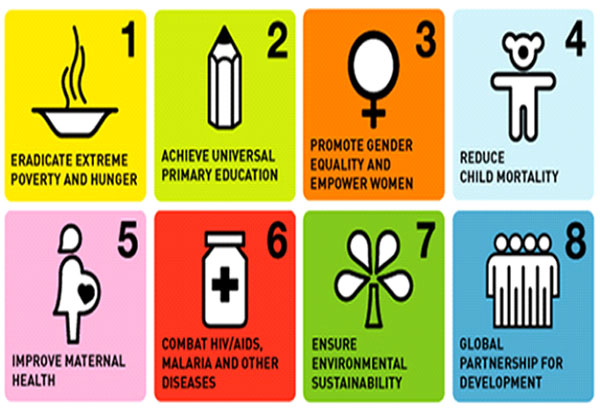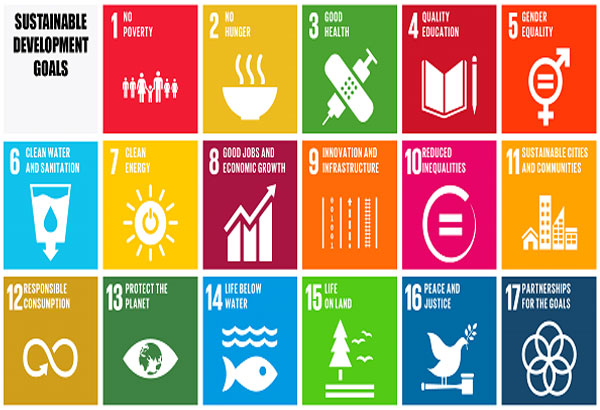Targeting poverty: hit or miss?
Let’s begin with a sobering reminder: about a quarter of Filipinos live below the poverty line today. That means roughly twenty million five hundred thousand of our fellow citizens get by on less than $1.25 a day, which, at current exchange rates, is 57 pesos and 50 centavos. That won’t even buy you a cup of coffee at Starbucks. This should be the horizon against which any discussion of anti-poverty programs takes place.
The recent meeting of the United Nations General Assembly was a benchmark for everyone involved in development and anti-poverty: it marked the end of the 15-year Millennium Development Goals (MDGs) and the beginning of another global 15-year program—the Sustainable Development Goals (SDGs).
Critics have had plenty to say, with the most common complaint being a critique of the generality and idealism (if not sheer utopianism) of the SDGs. Indeed, it would seem that the goals are couched more in the language of diplomacy than in the language of development economics.
But first it might be good to examine how exactly the MDGs differ from the new SDGs.

Millennium Development Goals

Sustainable Development Goals
Infinitely more broad and ambitious, the SDGs list twice as many goals, and with each goal list targets as well—a total of 169 individual mandates. Of course, the SDG’s first goal, “End poverty in all its forms everywhere” doesn’t necessarily look more realistic than the MDG’s “Eradicate Extreme Hunger and Poverty.” But another way to look at it is in terms of what happened during the MDG period itself.
From 1990-1999—the period just before the MDGs were initiated—the number of people worldwide living on $1.25 a day went down from 1,926 million (nearly two billion people) in 1990 to 1,751 million in 1999. While the MDG program was in effect (2000-2015), that 1,751 million was reduced to 836 million.
Not all of that improvement can be attributed to the MDGs, of course, and even under the program, the results were uneven—in sub-Sahara Africa, extreme poverty went down by only 28%—but here in Southeast Asia, it went down by as much as 84%, even in the face of the region’s burgeoning population.
As effective as the MDGs might seem to have been, the new SDGs raise the bar in several important ways. “Extreme poverty” at the beginning of the MDG period was defined as living on $1.00 a day or less—for the SDGs the defining number is $1.25 a day. But the goal of reducing the number of people living in poverty by half—something the MDGs almost saw—has also raised the bar in a different way. The SDG target calls for “complete eradication”—for all people—meaning,no one living below the $1.25 a day level by 2030. The “reduce by half” target has moved up to a higher category: “By 2030, reduce at least by half the proportion of men, women and children of all ages living in poverty in all its dimensions according to national definitions.”
In terms of poverty eradication, the seven targets of Goal 1 seek to raise the living standards of the—internationally recognized—extreme poor; cut by half the number of poor according to local standards; provide the poor with social protection and access to resources; and build their resiliency from disasters.
Obviously, in the Philippines, just achieving SDG 1 is no easy task. Issues involved in this goal were addressed in detail recently by Cielito Habito, Ateneo Economics Professor and former NEDA Director-General, in a symposium, “Towards Zero Poverty: Pursuing Inclusive Development and Shared Prosperity,” sponsored by the Asian Institute of Management’s Rizalino S. Navarro Policy Center for Competitiveness (formerly AIM’s Policy Center).
Professor Habito confirms that the region has been most successful in increasing growth and achieving poverty reduction.In this country, compared to the 2004-2009’s 4.9% average GDP growth, we have enjoyed a 6.4% average growth in our domestic economy over the last five years—among the fastest in Southeast Asia.
Because of sustained economic growth, our inflation rate has gone down to a record low of 0.6% as of August 2015; unemployment has gone down to 6% and an additional 1.05 million new jobs were created last year. Compared to a lackluster zero percent increase in public and private investments from 2004-2009, there has been a 10% average annual growth in investments in the past half-decade.
Unfortunately, that growth has only marginally included the poor. Habito says it is a “narrow, shallow, and hollow, non-inclusive growth”that is mainly driven by the Business Process Outsourcing (BPO) industry, finance, and real estate sectors, and primarily felt in the National Capital Region, Central Luzon and Southern Tagalog areas. Exports from low domestic value-added sectors have little linkage to the rest of the economy,he adds, and job growth lags far behind economic growth.
Likewise, social inequality remains a major concern: the richest 1% of Filipinos control 60% of the domestic economy,while the income of the richest 20% is 8.4 times that of the poorest 20%. That disparity is much higher than other Southeast Asian countries such as Thailand, Vietnam, and Sri Lanka.
With persistent poverty incidence brought about by factors as chronic as natural disasters, on the one hand, and as transient as fuel and food prices, on the other, what strategies can help achieve inclusive growth and reduced poverty? Habito offers four ways: small enterprise development;stronger competition policy; asset reform; and support for sectoral industries.
To develop and expand, micro, small, and medium enterprises (MSMEs), Habito proposes concerted, government-wide efforts to provide them access to finance and markets, as well as Research and Development. Legislation like the recently passed Philippine Competition Act (RA 10667) could help level the playing field for MSMEs by curbing cartels and monopolies—even government ones—and reduce regulatory conflict of interest.
One way of addressing social inequality, Habito notes, is to pursue asset reform through land reform and provide support services to landless farmers and farm workers.Another is to protect the rights of small fisherfolk fishing in municipal waters, as provided in the Fisheries Code.Also,recognizing IP ancestral domains rights under the Indigenous Peoples Rights Act (IPRA), and providing low-cost housing to informal settlers under the Urban Development and Housing Act (UDHA).Any and all of these things can help narrow the gap between the rich and poor. Habito asserts that studies have shown that such asset reform programs have shown positive impact on beneficiaries. But unaddressed gaps remain in policy formulation and implementation.
Habito also proposes that government prioritize support for economic sectors that are deemed to be drivers of inclusive growth. These include tourism and allied industries; agriculture and agribusiness; and manufacturing. These sectors are considered to be drivers because their growth generates substantive employment and benefits other industries in the economy through forward and backward linkages.
Finally, he urges government investment in human capital development, particularly in health and education. Specifically, education that promotes entrepreneurship—rather than molding graduates to simply aspire for a job and a wage—that prepares and inspires them in turn to create jobs and wealth, improve education and continue to expand universal health care access in the country.
One thing that Habito fails to mention is the imperative of reproductive health. While an RH law was passed after a great deal of anguished debate, its implementation has been held up in the courts. Without adequate means for controlling population growth, efforts at poverty reduction will continue to be stymied.
All the issues Habito discusses stem from a number of the targets covered by SDG 1, “End poverty in all its forms everywhere.” But it says nothing about many other issues still up for debate—and they are many—from food security to the role of international trade in agriculture and much more. These debates are now, or will soon be, taking place all over the world. Nations—including our own—will be designing methods of data collection to assess progress toward targets; will be coming to grips with the kinds of interagency coordination needed to approach the 169 targets; and will be developing effective bottom-up vs. top-down interaction needed to get the right programs into the right places, among the right people.
Unlike the MDGs, which were primarily applied to developing countries, the SDGs address all countries—rich and poor.With over 180 countries worldwide having to take decisions on the entire SDG program, it’s easy to see why flexible language was called for. In fact, while the MDGs were designed behind closed doors—which contributed to their relatively slow start—the SDGs were drafted with much greater transparency.
We Filipinos are favored in several ways. Regionally, Southeast Asia is a strong growth center. Nationally, in addition to the past few years of experience with interagency cooperation and innovation in bottom-up planning, we have held our place as a growth economy and improved our international financial position with international ratings agencies.
But what we must bear in mind is that both the MDGs and SDGs provide normative guidelines for development. Their actualization will depend a great deal on the kinds of policies and political will mustered by governments and their citizens. As such, we will always fall short of fully realizing the goals set by these norms.
Still, the MDGs did provide enormously helpful guidelines, despite their very real limitations. While we lagged behind in terms of the maternal mortality and HIV/AIDS goals set by the MDGs, we also made significant strides in terms of infectious disease, neonatal mortality and poverty rates as a whole. The SDGs—with their broader targets and deliberate engagement with notions of inequality, environmentalism and a much wider variety of stakeholders—raise the bar for future programs and policies. The idealism inherent in these goals provide us with a more expansive horizon to strive for a better and more equitable society.
- Latest
- Trending




























